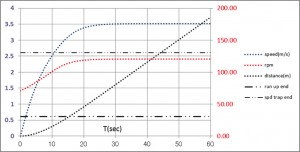Blog 2 (23/03/15)
So now comes what I would call the most exciting part, the build, and I love it when a plan comes together.
We started off with our mould which was a female negative of the submarine, in other words a block of foam that looked like a bath tub. After this the steps were:
- Prepare the mould by putting a skin on it as the resin you use to glue the fibres together would dissolve the foam block.
- Fill the mould by filling it with something akin to car filler, sand it, put more filler on and repeat a couple times until you lose your finger prints so that the mould is as smooth and fair as possible.
- Put first skins in which is very similar to wall papering.
- Put foam core in
- Put final skins in
- Repeat for the other half and then attach the two halves together
- Cut all the shafts to the correct length and join up the systems
There’s a bit more to it than that but that’s the gist of things. You can check out the website research.ncl.ac.uk/subteam for some pics of the build.
So far we’ve attached the two halves of the submarine together which instantly made the whole project and 2 years of working on the submarine worth it. It brought on the reality of the project and that we’re going to America to race it which was exciting and also a little daunting. At present we’re assembling the steering system and then we can fix in the peddle box which will bring the submarine to a near completion state which means it’s time to think about testing.
At the moment we’re hoping to test the submarine at either Strathclyde University in Glasgow, Catapult in Blyth who owns a dry dock or in Capernwray which is a dive site, we’d do it in our own tank however it’s not deep enough. We’re using the test as a chance to get used to the steering and also we want our submarine to go as fast as it can possibly go so we’ll use the test as a try out to find our fourth team member who can put more power into the system than us.
To show you something a bit more technical, below you can see a graph showing the predicted performance of the submarine where the right hand axes shows the distance (m) and the left hand axes shows the speed (m/s), as you can see from this we should be able to travel 130m in 60 seconds. It can also be seen that our theoretical top speed is 3.5m/s which if you imagine the submarine moving 3.5 metres in one second then you can get a feel for how quick this is going to (hopefully) be after travelling for 30 seconds.
 Figure 1 Predicted Submarine Performance
Figure 1 Predicted Submarine Performance
To conclude, in the past 3 months I’ve learnt how to use composites, when to use composites and what composites to use. As the mould will only be used once as new teams will want to design their own submarines, this means that there’s a mould which nobody wants …. except me, which is great because it means that as the project is student run we can decide what to do with it and I’ll be taking it home so that I can put all of the manufacturing techniques that I have learnt to good use. I know I’ve left out all the details on how we designed the submarine but as is the case with most submarines, it’s classified, so you’ll have to join us to see how it’s really done.
Recently we’ve started up the next team and got them working on their designs, they’ve all shown a lot of interest and next year’s team is about 12 people so the submarine team at Newcastle University is here to stay where they can benefit from our work and focus on other systems, perhaps a sonar? The question of “What’s next?” for the next submarine is something to ask yourself from the moment you’ve decided upon how far you are going to take your current submarine and have defined your specification, some of the suggestions that we’ve passed on to the next team are:
- Contra rotating propeller?
- Automated variable pitch?
- Sonar system to automatically control distance between walls which would keep the submarines course and trim?
- Improve safety?
- Place a plastic dome on the front to improve visibility?
- Fore and aft pressure sensors so that trim can be automatically controlled?
Even though the new team has all of our design files there’s still plenty to do and lots of imaginative solutions to dream up which can give future teams an edge over our competition.
By Max Davidson
